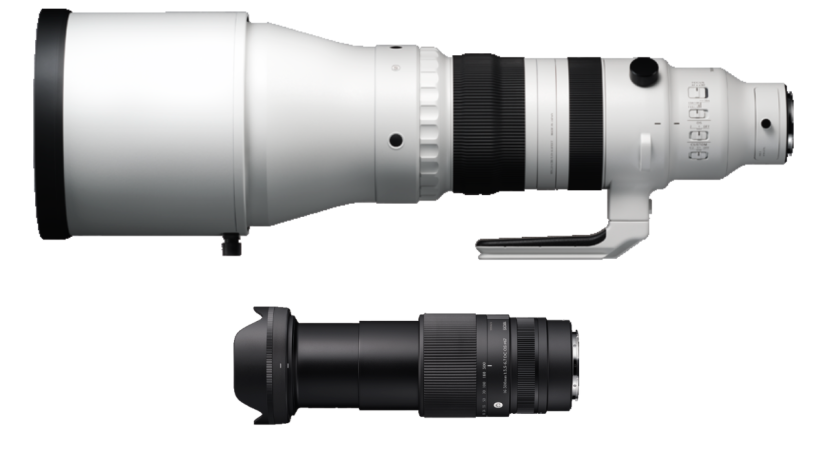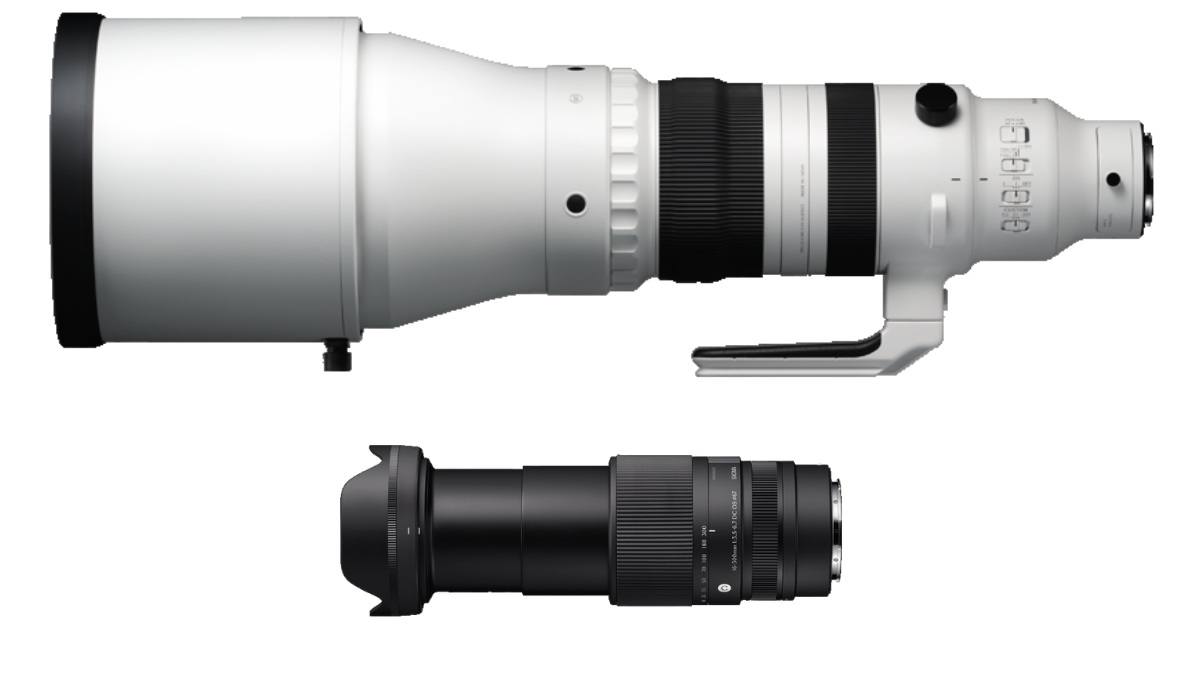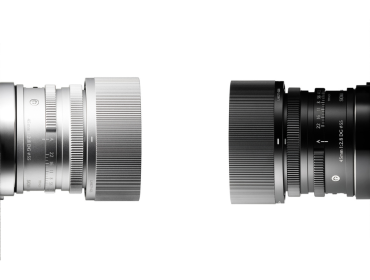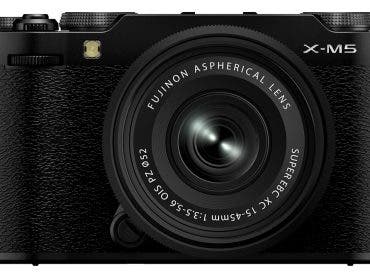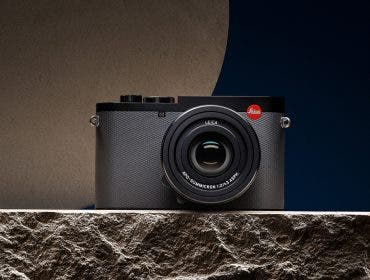Sigma has just announced the creation of two new groundbreaking lenses, a rebranding, and a few minor improvements to nine already-existing I-series lenses. The new Sigma 300-600mm f/4 DG OS Lens offers creators unparalleled capabilities to capture prime-quality images in a zoom lens with a constant f/4 aperture across the range. On the other hand, the newly announced Sigma 16-300mm f/3.5-6.7 offers 18.8x magnification for crop-sensor shooters in a compact and lightweight package, creating the perfect lens for the creator looking to simplify their kit. We have much to cover in this post, so let’s jump into the action.
Key Features of the Sigma 300-600mm f/4 DG OS Lens
- 300-600mm Focal Length Ideal for Sports and Wildlife
- f/4 Max Aperture Across Zoom Range
- Excellent Optical Performance with 28 Lens Elements in 21 Groups
- High-Speed HLA Autofocus
- 5.5 Stops Image Stabilization
- Thermal Insulation Suppressed Heat Absorption
- Drop-In Filter Holder
- 3985g/140.6oz
Key Features of the Sigma 16-300mm f3.5-6.7 DC OS Lens
- 18.8x Magnification Covering 16-300mm
- APS-C Compatible
- 24-450mm Full Frame Equivalent
- Made for L-Mount, Sony E-Mount, Fuji X Mount, and Canon RF Mount
- High-Speed HLA Autofocus
- 4.5-6 Stops Optical Stabilization
- Zoom Lock Switch
- Minimized Flare and Ghosting
- Suppressed Focus Breathing
- 615g/21.7oz
What’s New About the Lenses?
The headline feature of the new lenses is undoubtedly the 300-600mm f/4, which promises to deliver outstanding optical performance for sports and wildlife shooters alike with a fixed aperture typically seen in prime lenses but with the added capability of zoom. The new 16-300mm spans the widest focal length ever for a mirrorless lens with its approximate zoom ratio of 18.8x. The lightweight size and nature of this lens and the incredible focal length are sure to be an instant hit amongst those looking to save space in their kit. Finally, the freshly revived and rebranded I-series lenses are seeing a facelift to match Sigma’s new identity.
Sigma 300-600mm f/4 DG OS – Power of a Prime, Freedom to Zoom
Typically, zoom lenses are more limited in aperture than their prime counterparts. The new Sigma 300-600mm f/4 DG OS Lens gives the creator the optical quality of a prime lens in a versatile zoom package. With a fixed aperture across the range, you never have to worry about adjusting exposure as you zoom in. Finally, internal zoom adds to the versatility of this lens as the center of gravity stays relatively constant across the zoom range.

Outstanding Specs for Sports and Wildlife Shooters
Typically, we’d expect a little less from the optical quality in a zoom lens than a comparable prime lens. This “conventional wisdom” is shattered by the Sigma 300-600mm f/4 DG OS. Sigma has used 28 lens elements in 21 groups, including 6 FLD and 1 SLD glass element, to ensure minimal chromatic aberration and maximum resolution across the entire zoom range. A high-thrust HLA (High-response Linear Actuator) provides fast, accurate autofocus that is crucial for sports and wildlife photographers, and 5.5 stops of optical stabilization help to nail sharp exposures when handheld or on a monopod.

Sigma 16-300mm f3.5-6.7 DC OS – 18.8x Focal Range Coverage
The Sigma 16-300mm f3.5-6.7 DC OS Lens is the world’s first mirrorless lens with an approximate zoom ratio of 18.8x and a focal length spanning the full frame equivalent of 24-450mm. A maximum magnification ratio of 1:2 at 70mm provides the creator with outstanding close-up performance, and a maximum magnification of 1:3 at the wide end and 1:4 at the telephoto end allows the photographer to capture anything in fine detail.

Lightweight and Compact
Considering this lens’s massive wide-to-telephoto range, 615g/21.7oz is exceptionally lightweight. The size of this lens makes it a perfect fit for many of the crop-sensor mirrorless cameras on today’s market, especially for the creator who wants one lens to do it all. When you want to carry less, this lens can simultaneously replace numerous lenses in your bag.

Sigma I-Series Lens Refresh
In addition to the two new lenses, Sigma has refreshed the look of its I-series lenses, including nine compact full-frame prime lenses for mirrorless cameras. The lenses better reflect the brand’s new identity and add new colors for preexisting lenses. In addition, the Sigma 45mm f2.8 DG Lens now supports the Magnetic Metal Lens Cap, ensuring viability throughout all nine I-series lenses with the dedicated lens cap. The optical design of each lens remains the same, so you can still expect the same excellent image quality you’re used to seeing in the I-series. This refresh is perfectly aligned with Sigma’s new Camera, the Sigma BF.
Who Should Buy the Sigma 300-600mm and Sigma 16-300mm
The Sigma 300-600mm f/4 DG OS Lens is optimized for sports and wildlife shooters who need the most range out of their lenses but don’t want to sacrifice resolution or aperture. The 300-600mm lens matches the f/4 aperture of other 600mm lenses on the market but with the added capability of zoom, giving creators even more versatility. The 16-300mm f3.5-6.7 DC OS Lens is perfect for the creator who wants to simplify their kit into just one lens to capture everything from the grand landscape to the finest details of the scene in front of them. In particular, this lens should be popular for travel and landscape photographers, who need a lightweight and highly versatile setup.

Comparable Sigma Lenses
Creators looking for a lower-cost alternative super telephoto lens should consider the Sigma 150-600mm F5-6.3 DG DN OS Lens, which has the same reach as the new 300-600mm lens at a much lower price tag. Creators who don’t demand the constant f/4 aperture will like the lighter weight of the 150-600mm (2100g/74.1oz) with a still competitive aperture range of f/5-6.3. A minimum focusing distance of 23 inches allows creators to shoot macro-style images, and up to 5.5 stops of image stabilization is perfect for those shooting handheld. If you want a slightly less expensive alternative to the new super telephoto, check out the Sigma 150-600mm F5-6.3 DG DN OS Lens.
Final Thoughts on the Sigma 300-600mm and Sigma 16-300mm
Whether you’re a casual traveler who likes to take a lightweight setup on your trips or a professional wildlife, sports, or event photographer, today’s announcement certainly brings two very exciting new lenses to the mirrorless market. Sigma also rebranded nine other I-series lenses. Sigma continues to push the boundary of what we consider possible in equipment, and we expect both of these new lenses to be an instant success across the photo and video community.
